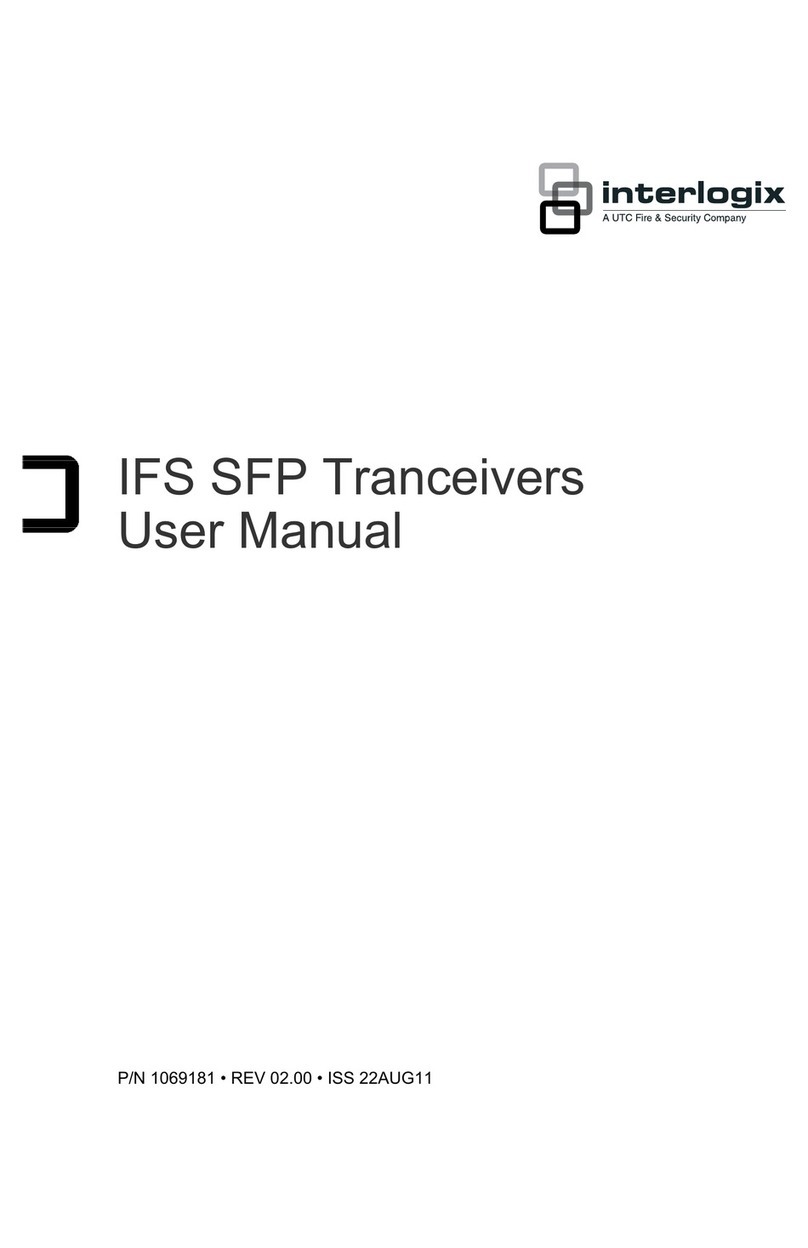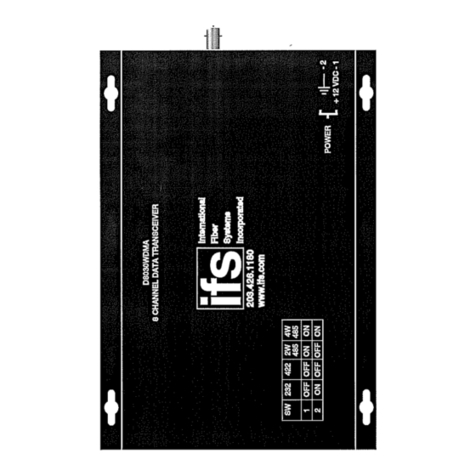
SuperBus 2000 RF Transceiver Module Installation Instructions 3
• The red LED should turn on to indicate bus
communication with the panel.
• The green LED should turn on to indicate that power is
present and it should flicker off and on each time a
wireless sensor RF packet is received.
Note: If the green LED is not on, unplug the panel AC
power transformer, disconnect the backup battery, and
proceed to Troubleshooting.
Troubleshooting
Problem Action
Green and red LEDs are off 1. Check that the panel is
powering up.
2. Check/correct module to panel
wiring.
Green LED is on, red LED is off Check/correct bus (A and B)
wiring connections of module
and panel.
System is not responding to
wireless sensor signals 1. Check that the green LED
flickers when a wireless sensor
is tripped.
2. Check that the transceiver is
learned into the panel memory.
Specifications
Models 600-1025-01-95R, 600-1025-01-43, and 600-
1033-01-8A
Frequency
600-1025-01-95R
600-1025-01-43
600-1033-01-8A
319.5 MHz
433.92 MHz
868 MHz AM
Panel compatibility
600-1025-01-95R
600-1025-01-43
UL approved Concord 4, Concord 4
Commercial, and Concord Express V4,
model numbers 600- 1021-95R, 600-1040,
and 600-1022-95R
CE approved European panel models 60-
840- 43-242/482/MAX and 60-868-43-
482/MAX
Sensor compatibility
600-1025-01-95R
600-1025-01-43
600-1033-01-8A
All 319.5 MHz sensors
All 433 MHz sensors
All 868 MHz AM sensors
Current required
(without daughter
board)
Typical
Maximum
45mA
100mA
Voltage 8 to 15 VDC
Wireless range 1,000 feet (305 m
Operating temperature 32 to 120°F (0 to 49°C)
Storage temperature -30 to 140°F (-34 to 60°C)
Maximum relative
humidity 85% noncondensing
Dimensions 3.2 x 4.6 x 0.6 inches (8.1 x 11.7 x 1.5 cm)
Features Antenna tamper, jam detect, wall tamper,
cover tamper
Enclosure 600-1029
Regulatory information
Manufacturer UTC Fire & Security Americas Corporation, Inc.
1275 Red Fox Rd., Arden Hills, MN 55112-6943,
USA
Listings UL (985, 1023, 1610), FCC ID (B4Z-875-TCVR),
CUL (C1023-1974, S545-M89), IC: 867-875CVR
600-1025-01-95R
FCC compliance This device complies with FCC Rules Part 15.
Operation is subject to the following two
conditions: 1. This device may not cause harmful
interference. 2. This device must accept any
interference that may be received, including
interference that may cause undesired operation.
Changes or modifications not expressly approved
by UTC Fire & Security can void the user’s
authority to operate the equipment.
Certification
600-1025-01-43
600-1033-01-8A
Contact information
For contact information, see www.utcfireandsecurity.com or
www.interlogix.com.
For technical support, toll-free: 888.437.3287 in the US
including Alaska, Hawaii, Puerto Rico, and Canada. Outside
the tool-free area, contact your dealer.
SuperBus is a registered trademark of UTC Fire & Security,
Concord is a trademark of UTC Fire & Security. All other
trademarks are the property of their owners.
GE is a trademark of the General Electric Company and is
under license to UTC Fire & Security, 9 Farm Springs Road,
Farmington, CT 06034-4065
Copyright © 2011 Interlogix, a UTC Fire & Security Company.
All rights reserved.























